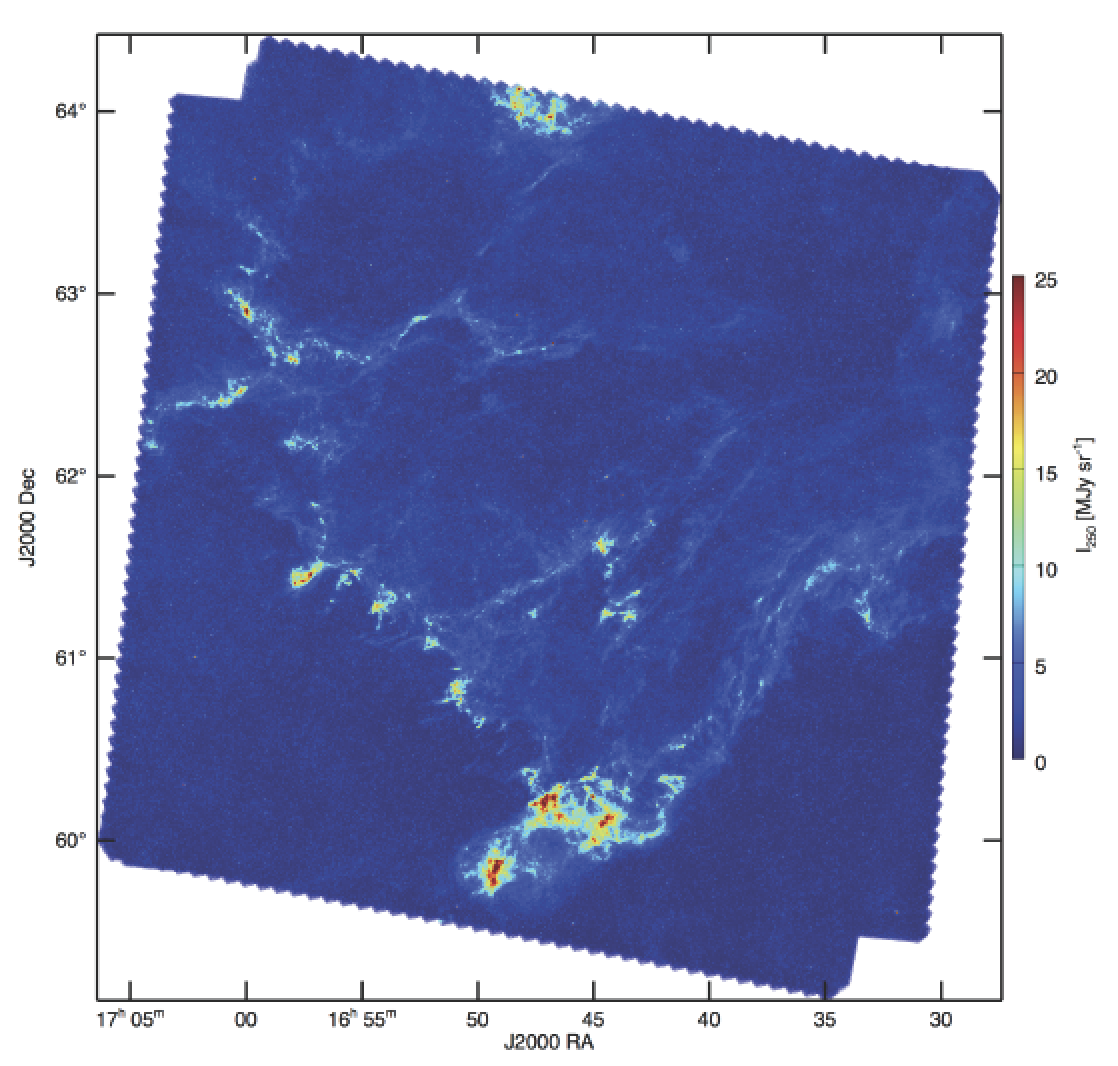Interstellar Medium of our Galaxy
The stellar initial mass function (IMF) is a fundamental global output of the star formation process, and the question of its origin and universality has been a long-standing open issue. While the base of the IMF (∼ solar-type stars) is likely inherited from the prestellar core mass function and may result from gravo-turbulent cloud fragmentation, the problem of how the most extreme stellar objects (high-mass stars and brown dwarfs) build up their masses is completely unsettled. This issue is often tackled through the observations of star-forming regions in dust emission/absorption. However, the physical properties that are inferred form such observations (e.g. mass, temperature) strongly depend on the assumptions made on the dust emissivity, which is known to vary as a function of environment. CONCERTO at APEX is offering a great opportunity to constrain dust properties in the (sub-)millimeter wavelength domain.
Dust emissivity depends on the dust chemical composition, and size distribution, which are unfortunately poorly constrained. Grain sizes also play an important role in determining the available area for grain surface chemistry and electron recombination, influencing the ionisation fraction and the coupling to the magnetic field. One the one hand, it is expected that dust grain sizes will increase because of coagulation and the formation of ice mantles in dense inner regions. On the other hand, in the outer less dense regions, no ice mantles coat the grains and their optical properties and sizes should differ. By mapping nearby and galactic plane star-forming regions with CONCERTO, as well as diffuse high Galactic latitude clouds (See the Figure), one will be able to constrain variations of the dust emissivity in a broad range of environments, giving important input to Galactic dust models. Despite the tremendous impact of massive stars on the interstellar medium, no consensus has been reached on the question of their formation. In recent years, numerical and observational studies have suggested that, as a result of the global collapse of the cloud from which they form, massive stars may accrete gas from a much larger mass reservoir than their low-mass counterparts, known to gain mass from their small-scale surrounding core. Characterising the transition from core-fed to cloud-fed star formation is key for our understanding of the star formation process.
CONCERTO observations of a large area of the galactic plane could allow both to determine what is the frequency and maximum mass of starless dense cores, and to better characterise the variations of cloud density structure across the core-fed/cloud-fed transition. Being sensitive to the CO(3-2) line, such observations could also be used to separate the dust continuum emission from the CO(3-2) emission in the ATLASGAL 850 μm survey.

